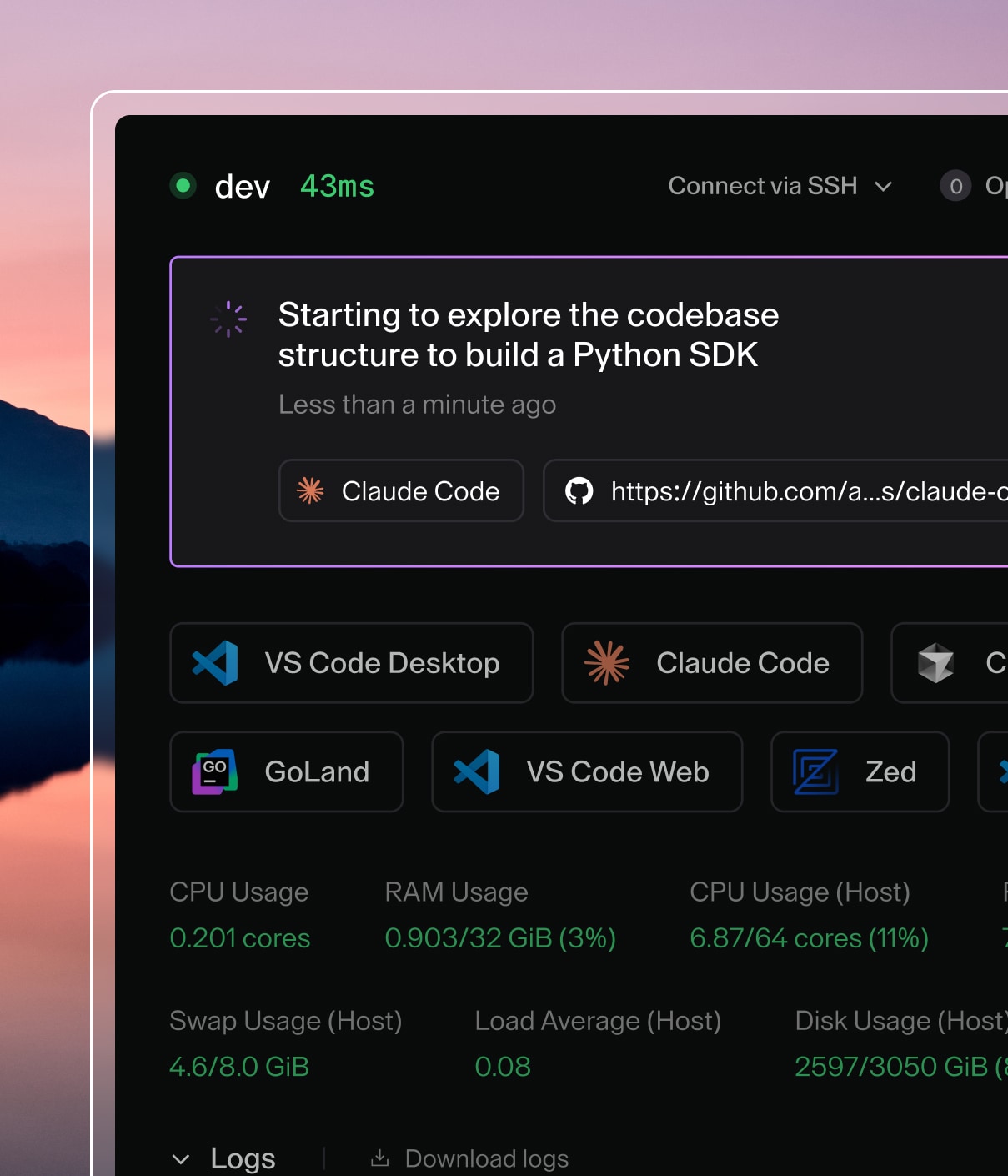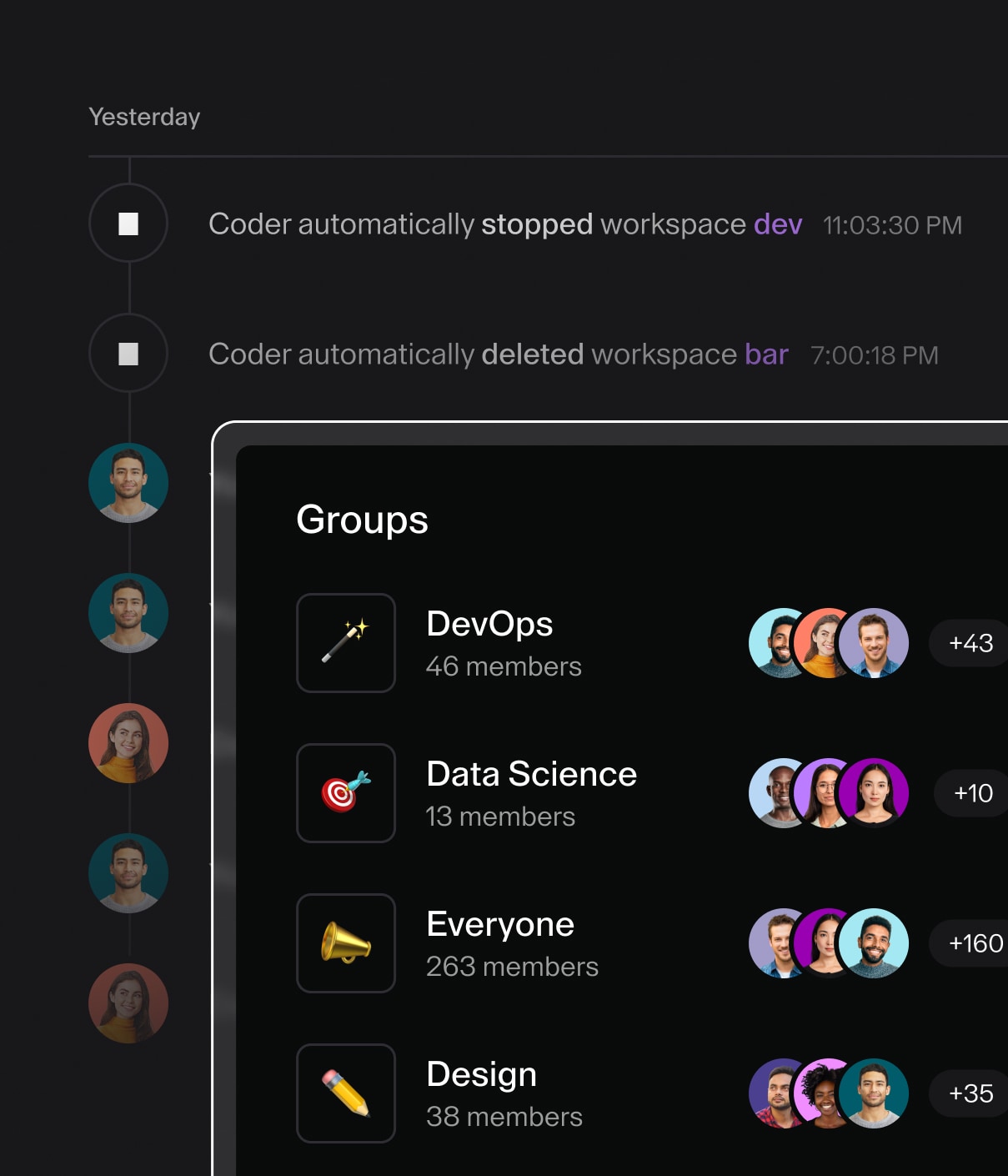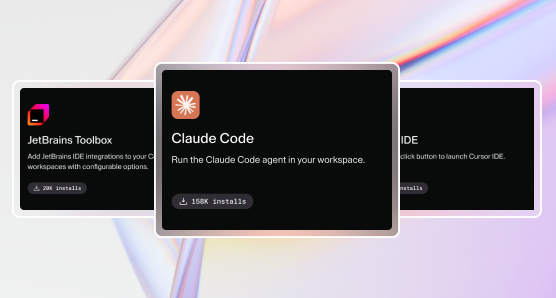How AI Agents Are Redefining Developer Workflows at Anthropic
A fireside chat with leaders from Anthropic's product and developer experience team

The future of software development isn't coming. It's here. And it's running in terminals, spinning up in cloud development environments, and transforming how the world's most advanced AI companies build code.
On July 30th, we hosted a fireside chat with leaders from the Anthropic product and developer experience team building Claude Code to explore how AI coding agents are reshaping development workflows. The conversation revealed something remarkable: we're witnessing the birth of AI-native software development, where agents don't just assist developers but fundamentally change what developer experience means.
The Philosophy: Aggressive AI Adoption
Anthropic's approach to AI development is refreshingly direct. "We pretty much encourage people to use AI as aggressively as possible," explained Jacqueline Lee, Member of Technical Staff at Anthropic. "Because through giving AI agents really hard tasks, that's the only way to actually push the boundary of what they're capable of."
Through giving AI agents really hard tasks, that's the only way to actually push the boundary of what they're capable of.
This philosophy permeates everything they build. But it comes with an important caveat from Cat Wu, Product Manager for Claude Code: "If I write sloppy code, it will definitely produce me more sloppy code. It's kind of like an amplifier."
The lesson? AI agents magnify your practices—both good and bad.
Claude Code: Terminal-first, developer-ready
Cat Wu cut straight to the core of their design philosophy:
Claude Code is an agent coding tool that, for now, lives in the terminal. The reason that we designed it this way is to make it really extensible, customizable, hackable.
This isn't about replacing your IDE. It's about meeting developers where they are. "Because it runs in a terminal, it's compatible with most dev setups," Cat explained. "You can run it within the terminal section of your IDE provider or your IDE of choice."
The terminal-first approach solves a critical adoption challenge. Every developer uses different tools, different workflows, different environments. But as Cat noted: "The one thing that we found in common with everyone is that almost everyone uses a terminal."
Real-world impact: From onboarding to on-call
At Anthropic, Claude Code itself has become essential infrastructure. "Most technical Anthropic employees were already using Claude Code" before its external launch, Cat noted. The use cases span the entire development lifecycle:
Developer onboarding revolution
"It's the fastest way for you to get up to speed on a new code base," Wu said. "It also means that new hires can get work done whenever they want to work and not just when their mentor is online."
It's the fastest way for you to get up to speed on a new code base. It also means that new hires can get work done whenever they want to work and not just when their mentor is online
On-call transformation
Jacqueline described their on-call workflow: "If you have an on-call playbook, you can just put that into your slash command, like an on-call slash command. Share context with these are the tools that... and then give Claude Code access to the tools that are mentioned in the on-call playbook."
From docs to demos
Perhaps most telling is the shift Cat described: "We've been seeing this shift both within Anthropic and with a lot of the customers we talk to. We call it docs to demos." With Claude Code, "it's much easier to get a working prototype quickly. It might not be mergeable in a one-shot way, but at least you can build something that works, that you can interact with."
Advanced workflows: Multi-Claude and beyond
The most sophisticated users aren't running one instance of Claude Code. They're running multiple. "A lot of people love to run multiple Claudes at the same time," Cat explained. "More common is 2 to 4. Three is my sweet spot."
A lot of people love to run multiple Claudes at the same time. More common is 2 to 4.
Jacqueline takes this further: "I do multi-Claude, but I try to not babysit them as much as possible... sometimes I would trigger a Claude through Slack. It will go off and which means that there's no steering involved."
The Claude Code SDK opens even more possibilities. Cat outlined three main categories:
- Creating GUI wrappers for less terminal-comfortable users
- Building role-specific agents (security engineers, SREs, on-call assistants)
- Developing general agents for legal, finance, or user-facing features
Enterprise Adoption Strategy: Security by Design
For highly regulated enterprises, Jacqueline outlined a critical security framework based on three properties:
- Access to private/proprietary data
- Internet access
- Access to untrusted data
"Never have all three in your environment," she emphasized, to prevent data exfiltration and infrastructure destruction.
Practical security measures include:
- "Remove credentials, inject agent identities" with limited infrastructure access
- Environment isolation over tool restrictions: "Hardening the environment is a better approach"
- Allowlist domains instead of full internet access
- MCP servers for controlled access to internal tools
Security isn't an afterthought—it's foundational. "Out of the box, Claude Code only has read-only permissions," Cat emphasized. "Any additional edits require approval from a human, so that includes editing files, running tests, executing any bash commands."
But there's a balance to strike. As Cat warned: "Developers are very sensitive to spam, because once you spam them, they're like, okay. Turn this whole thing off. This is terrible."
Developers are very sensitive to spam, because once you spam them, they're like, okay. Turn this whole thing off. This is terrible.
For enterprise adoption, Anthropic built first-class support for AWS Bedrock and Google Cloud Vertex AI from day one. "A lot of those folks really strongly prefer to use Bedrock or Vertex to access Anthropic APIs," Cat noted.
Coder: The platform for AI-native development
Anthropic's integration with Coder emerged as a key theme. Jacqueline highlighted how Coder enables their remote development strategy: "I have been focusing on remote development, majorly leveraging Coder as the control plane and configure environments for people to have one-click everything setting up all at once, ready to go kind of experience."
More recently, she's "been pivoting more into the agency environments, configuring environments for agents to run."
Cat demonstrated how Coder transforms Claude Code from a local tool into enterprise infrastructure: "It really lets you start to use these agents in a composable way. Meaning it's running entirely in the background. I could close my laptop and the agent continues to work... we actually have three agents all running in the background, working on various tasks."
I could close my laptop and the agent continues to work... we actually have three agents all running in the background, working on various tasks.
For enterprises exploring multi-Claude workflows, the benefits are clear. As one participant noted, "That's one of the top use cases, as you can have a bunch of Claude instances running. They're remote. They're sandboxed. And you don't have to worry about disrupting your local branch or repo or any type of security risk."
Looking ahead: The AI-native future of software development
The roadmap Cat outlined points toward a future where AI agents are embedded throughout the development experience: "We would love for Claude Code to be available on more surfaces that engineers are on... there's so many more places that you do work day to day."
The vision extends beyond code: "Claude Code is most successful when it has access to all the tools that a developer has. So think being able to understand the discussions on Slack and being able to pull in the PRD, product review docs and engineering specs, Jira tickets, customer support tickets."
Cat's forward-looking advice for enterprises:
Set up your remote infrastructure so that when the models are ready, you already have that set up to go, and your engineers can kick off many Claude Code runs at the same time on different tasks.
We're not just adding AI to existing workflows. We're witnessing the emergence of AI-native development, where agents and humans collaborate like colleagues. As Kyle put it: "I am very bullish on outsourcing my intelligence. I have been for a long time now. It's great."
The companies that understand this shift, that implement the infrastructure to support it, and that empower their developers to experiment aggressively will define the next era of software development.
Ready to explore AI-native development? Learn how Coder provides the secure, scalable platform for running Claude Code and other AI agents at enterprise scale.
Subscribe to our newsletter
Want to stay up to date on all things Coder? Subscribe to our monthly newsletter and be the first to know when we release new things!


